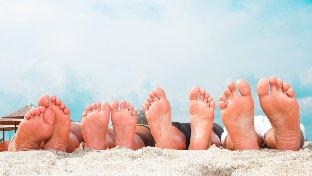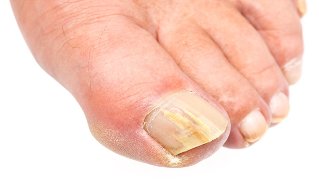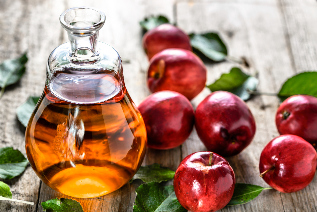Fungal infections (mycoses) are valid under dermatological diseases as the most common. The infection of pathogenic micro-organism, perhaps in different ways, and the insignificant symptoms of the disease in an early stage of their development, not all of the cases in time to see a doctor. In consequence of the pathological process, the whole comprising a large part of the extremity (usually the foot) and spreads in the tissue. The fungus starts on the legs are treatable, but in order to defeat the infection completely, sometimes it takes several months resistant to therapy.

The reasons for the emergence of the fungus on the legs
Fungus on the feet is caused by the penetration into the subcutaneous layers of spores of pathogenic micro-organisms. The defeat called only skin dermatomycoses, destruction of the nail plate, under the influence of the fungus – onychomycosis.
The infection of pathogenic micro-organism is carried out in two ways – direct and indirect light distribution. In the first case, the spores of the fungus can surface in the soil, on the tiles, and wood. In the second infection about personal things is a cloth – washing machine, Slippers, towels, and manicure devices.
Fungal microorganisms for a long time retain their viability in warm and damp places, which is why the infection occurs most often in swimming pools, at beaches, in Saunas, gyms and Saunas.
The risk of penetration of microorganisms into the skin several times increased, if on the feet, there are micro-cracks – wear and tear, scratches, and calluses. The susceptibility to fungal infestation increases under the influence of predisposing factors to the disease, it is:
- reduced resistance of the organism, i.e. the insufficient work of the immune system;
- the non-observance of the hygiene regulations;
- increased sweating;
- endocrine disorders with impaired metabolic processes. Fungal infections are characteristic for patients with Diabetes mellitus;
- Violation of blood circulation in the lower extremities, which may be associated with vascular pathologies or deformities of the feet;
- the wearing of tight, poorly ventilated shoes. Of the foot, while in such conditions, constantly sweating, caused scrapes and abrasions it is suitable for the propagation of the fungus Wednesday;
- Age. Characteristic of a fungal infection, children and the elderly, in these categories of patients the skin is thin, and its protective properties are reduced, and creates the conditions for the penetration of infection.
- excessive dryness of the skin. Moisturized skin a greasy film on the surface prevents the penetration of pathogens. In the case of increased dryness such protection is not, that disputes the fungi cannot penetrate more easily.
The likelihood of developing a fungal infection is much higher when on the body, several disease-causing factors.
Types of powdery mildew
Illness depending on the type of fungus is:
- Athletes. Called flexible Trichophytonmcntagrophytes;
- rubrofitiû. Occurs in 70 % of cases of fungus Stop.
Depending on the localization of the pathological process:
- Fungal infection between the toes (dermatophytosis). Mostly in the Form of (acute) fungal infection is in intertriginoznoy;
- plantar Tinea. The main features – desquamation of the skin, the progresses of the disease is in keratinization disorders;
- disgidrotical. The pathological process begins with the formation of lesions, similar to the Form of allergic manifestations;
- a deep Form of fungal infection. The infection involves the superficial and the deeper layers of the skin Stop;
- Onychomycosis – a fungal infection of the nail plate. Rarely occurs in isolation, in most cases, a complication of the plantar superficial mycoses.

Symptoms of the pathology
The first Phase of the disease is usually asymptomatic with blurred characters. The appearance is reduced resulting in a scaly patches, a little redness and itching is often not taken seriously, and the use of various Outdoor-medication against itching and inflammation symptoms, but the fungus does not die. That is, to develop the infection and gradually becomes chronic. Symptoms of the disease depend on the Form of the disease and its duration.
- mejpaltsevaya Form of fungal infection is due to the appearance of redness and burning between the toes. The inflammatory process not infrequently the infection spreads outside of the inter-digital spaces. Usually in the Winter, the symptoms subside, and in the summer, exacerbated;
- the fungal infection occurs with desquamation of the Epidermis with redness, and the individual sections of the foot. At regular intervals a strong itching occurs;
- Hyper-keratotic Form. By the formation of watery papules or Plaques bluish color with a rough surface. The individual centers can fuse together and cracks on the heels;
- disgidrotical Form. The most important characteristics – the emergence of a large number of aqueous bubbles, which opened in the course of time, and in their place remain wounds. In an advanced stage of this type of disease is often confused with eczema.
- Onychomycosis the change in the color of the nail plate, the appearance is dark or bright spots and stripes, the layering of the nail and thickening.
If a burning sensation, redness, scaling, itching on the feet and legs must visit as early as possible a doctor. In the early Phase of the disease can be easily treated by external means.
Diagnosis
With suspicion of a fungal infection, you should see a skin doctor. An experienced doctor puts on the basis of complaints of patients and inspection of the diagnosis. But for its confirmation, and the determination of the nature of the pathogen and laboratory analyses are required. Their implementation allows the type of micro-organism, which is necessary to have the correct scheme of treatment.
Treatment methods
The drug therapy is on the Basis of the stage of the disease, the patient's age, co-morbidities and complications. The treatment should be complex, it consists in the use of Outdoor and systemic preparations, and folk methods.
In addition, your doctor may prescribe you a Multivitamin complex, to improve the working of the immune system. In marked itching in the acute Phase of the illness, irritation to relieve antihistamines. In the case of a secondary infection is required in the course of the therapy, antibacterial drugs.
The fungus is deleted, and items of personal use. First and foremost, the shoes need to disinfectants, and the best treat is, replace it with a new one.
Determination of the level of infection must not be forgotten that a possible contamination with mould fungi and other family members. So before restoring, you must shoes, only the individual personal Hygiene items, towels, and house. The spores of the fungus are destroyed under the influence of high temperatures, therefore, it is necessary to iron underwear and bed linens, and even socks.
Local Drugs
Local antifungal agents, ointments, gels, emulsions, and solutions. Carry the external preparation to the affected skin stop after your treatment. To do enough foot bath with potassium permanganate, Soda ash, or soap for the feet. The time of the procedure – 15 minutes, not after the skin dry, and wear the set.
When onihomicose to use before applying the ointment or solution, remove the upper part of the affected nail. The nail plate is soft with special keratolytic agent. If you don't do this, you will not drop the components of the ointment into the lower layers of the nail, so where you grow fungal colonies.
In the case of the defeat of the nail-System-Tools from Pilz takes a drink sometimes 12 months or more. The Schema of the intake of medications the Patient is prescribed by the doctor.

Folk Remedies
How to get rid of mildew on the legs at home? You must keep in mind that the use of different "grandma's recipe" as the primary therapy, the infection subsided, but not completely. This leads to the fact that the fungus activates with time. Therefore, popular anti-fungal agents must be combined with drug therapy.
Defeat fungal infection Stop, use the bathroom, self-prepared ointments, rubbing.
- Anti-fungal properties of soap baths with the addition of salt, Soda, and core. To 5 liters of hot water, take 2 tablespoons of salt and baking powder, RUB in the solution in the neighborhood of a piece of soap. In this water, the feet are incubated for half an hour, then dried and applied to the skin and nails anti-fungal;
- Inter-gaps and focal points for fungal infection of the feet and the birch-tar can smear. The procedure is best used in the night, on the feet, clean socks;
- Vinegar Apple cider to mix with an equal amount of an alcoholic solution of iodine. In the resulting liquid-wetted swab and well you lubricate the Stop, the affected;
- Garlic oil. Garlic cloves, grind to a fine mash and combine with the creaminess of Butter or pork fat. The resulting ointment is used for the processing of Stop.
The treatment of the fungus on the legs people several weeks will have in a row. It is advisable at regular intervals, this increases the effectiveness of therapy.
Prevention of infection
Prevent the infection is not always possible. But you can minimize the risk of infection fungal microorganisms. Take note of the following rules.
- In public places where it is required, the replaceable footwear, just take your.
- Not to other items of personal Hygiene.
- To treat the resulting abrasions on the feet, calluses and abrasions in a timely manner.
- They only carry high-quality, well-ventilated shoes.
- Constantly comply with the rules of Hygiene.
The likelihood of developing an infection is reduced, if the good work of the immunity. Improve the condition of the body's own defenses, a balanced diet, Vitamin therapy, resilience helps. You must be treated in time all chronic diseases.
Conclusion
Nail fungus is not dangerous, but extremely unpleasant in its manifestations and consequences of pathology. To cope with the infection with the help of modern pharmaceutical preparations can be in just a few days, but under one condition – timely treatment to the doctor.































